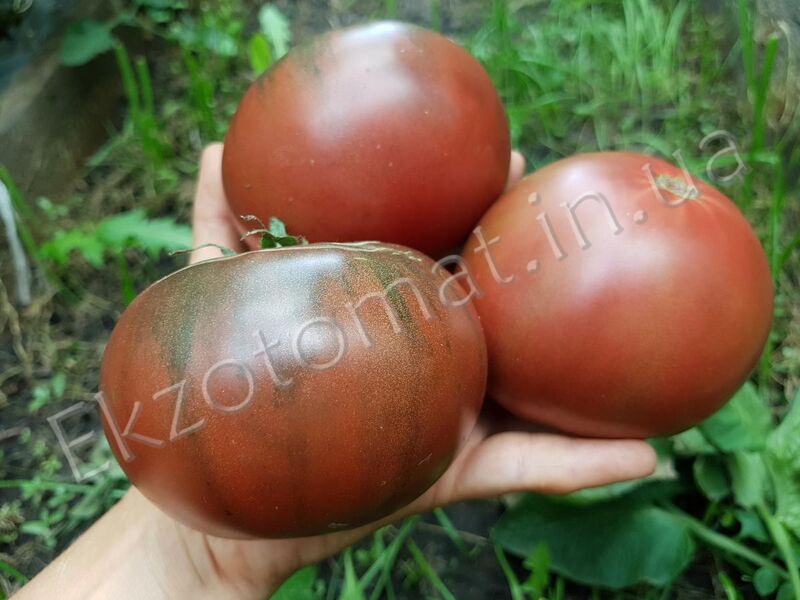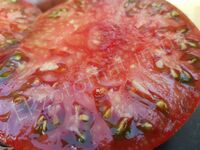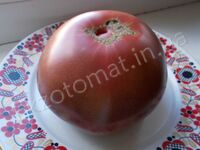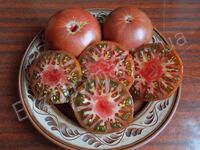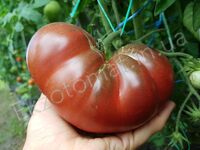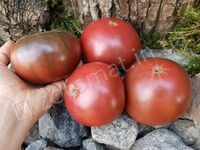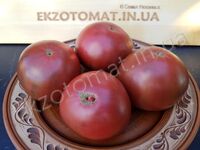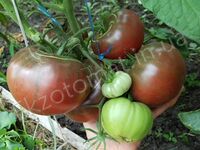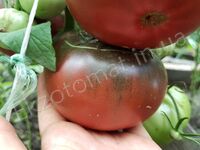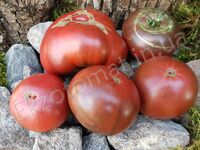Tomato "Mikado Black"
- Availability: In Stock
PACKAGING: Ziplock bag 12 - 15 SEEDS
1. Original Name: Mikado Black. Also known as Mikado Chornyi.
2. History: Mikado Black was developed by selection from a cross between Mikado with pink fruits and an unknown black tomato. Mikado (with pink fruits) was originally introduced by Peter Henderson in 1886. One of the first known potato leaf varieties offered in a seed catalog.
Mikado may be related to the Brandywine variety. However, there is no accurate information as both of the varieties are very old. As a matter of interest, 'Mikado' means 'Emperor' in Japanese and can be written in several ways: み か ど, ミ カ ド, or in Chinese: 帝 or 御 門. Today Mikado Black is one of the color varieties in the Mikado line. A commercial variety.
3. Plant Specifications: Medium early or mid-season. A good choice for growing both in a greenhouse and outdoors. Indeterminate, tree-type shrub, compact but growing up to 5-5.5 feet (150-170 cm). Firm and thick stems. Huge, wide, entire-type and half-entire dark green potato leaves. Regular truss with 4-5 large fruits per truss as a rule.
4. Training Instructions: Can be trained to one or two main stems. Pruning and staking are a must. Staking may be necessary for the first trusses of fruits.
5. Shape and Weight: Usually oblate and round but can have small ribs near the stem end. The first trusses can produce large fruits weighing 10.5-14 oz. (300-400 g).
6. Color: An unusual color ranging from dark pink to purple-brown when fully ripe. The color is darker near the stem end (brown and green). The flesh is dark crimson in a cut, and there is a greenish gel-like sac in seed cavities.
7. Flavor Profile: Very sweet and slightly acidic. Full fruit-like flavor gives it a start as compared to common red tomatoes. The flesh is sandy and glossy. Fleshy and juicy fruits.
8. Culinary Use: Ideal for salads. Perfect for fresh salads, snacks or freshly squeezed juices. Also great for ketchup, paste or canned juices. Keep well. Thin-skinned fruits can have cracks in case of sharp drops of humidity in the soil. Therefore, watering must be uniform. If the soil is wet to a depth of 2 in. (5 cm) there is no need to water the plants. Rains may be an interference. Fruits do not keep well (for 2-5 days when fully ripe). It is preferable to eat them fresh.
A stable variety. The only deviation can be the leaf type. It is a potato-leaf type in most cases. But the leaf can become regular due to bad weather conditions affecting the variety genome. It is necessary to collect seeds from potato-leaf plants only in order to maintain the purity of this variety and for the purposes of further selection.

